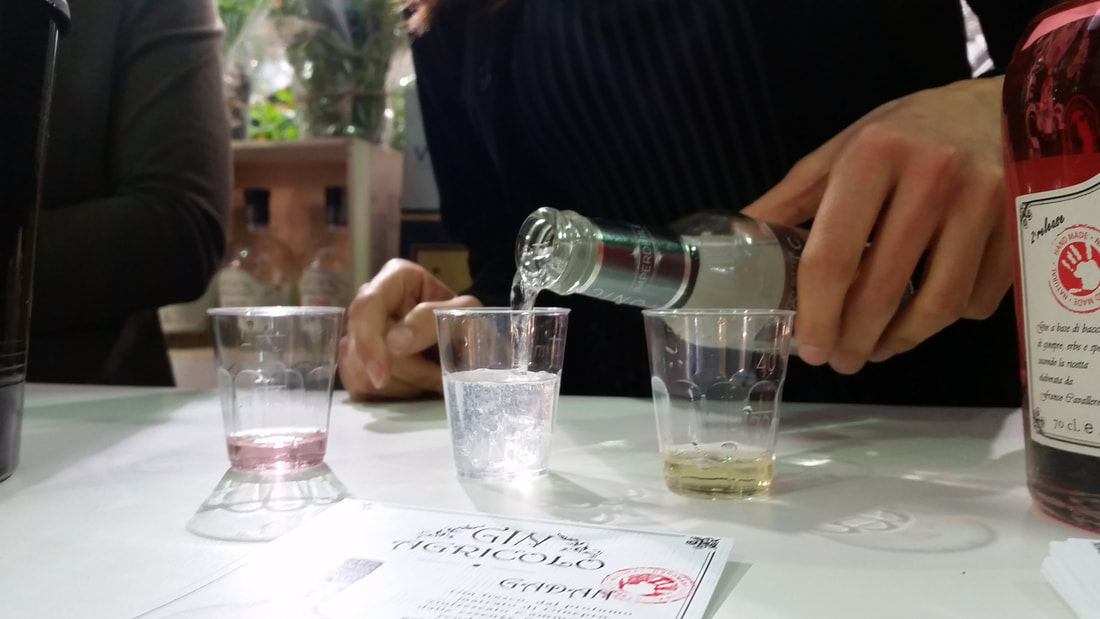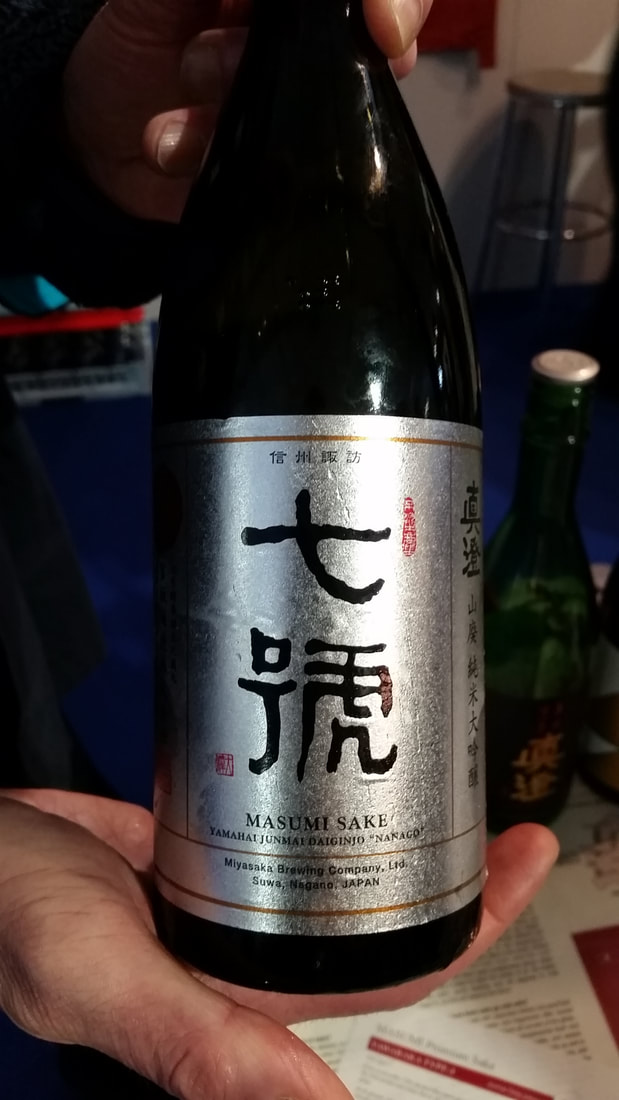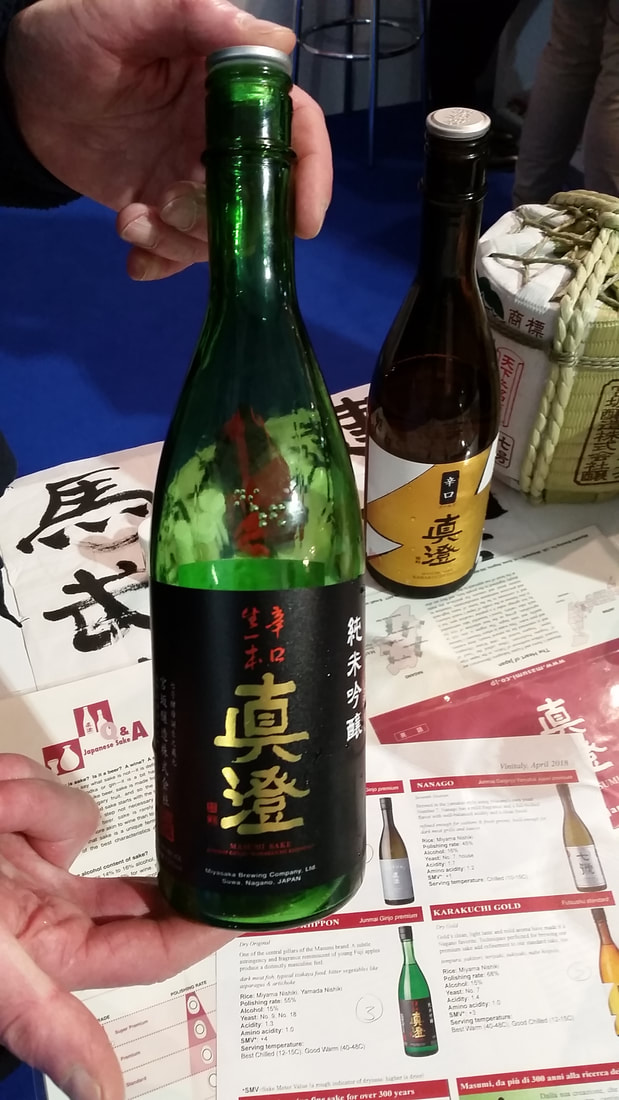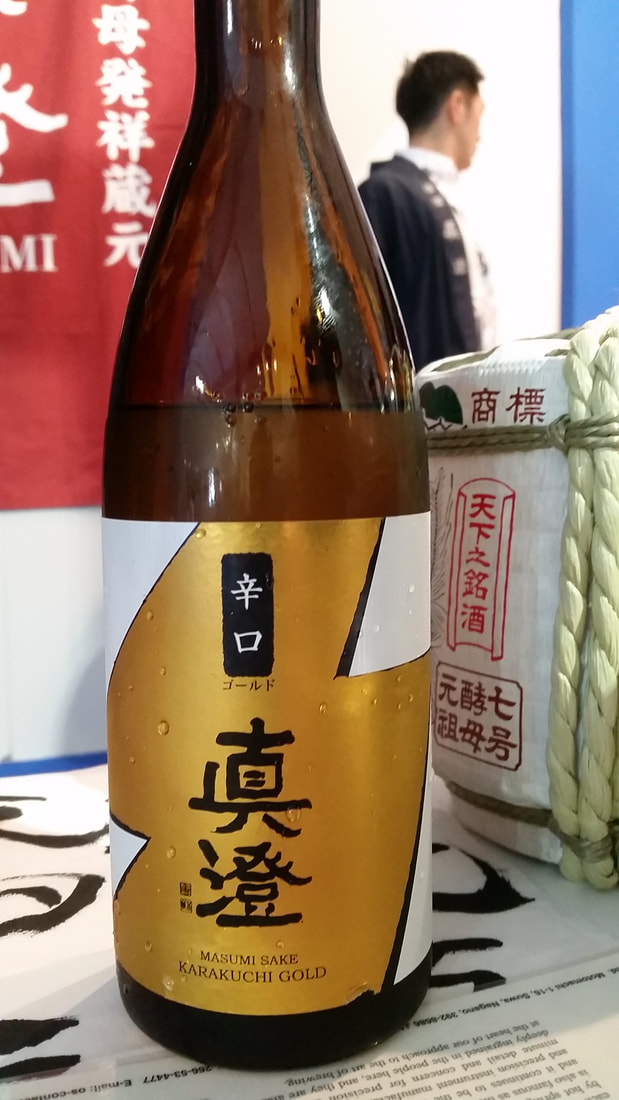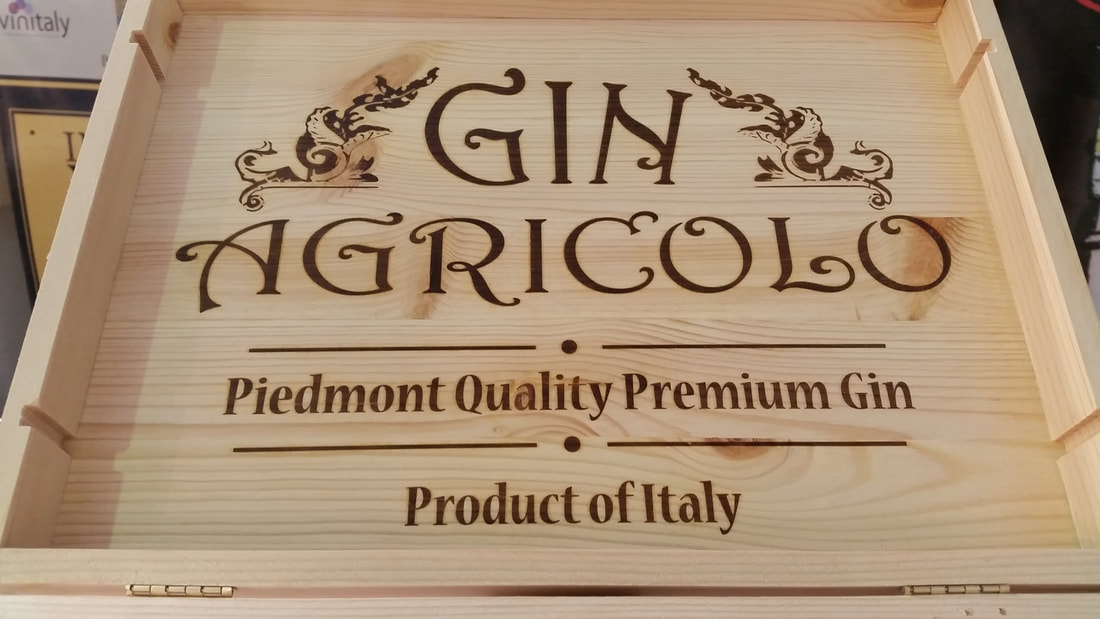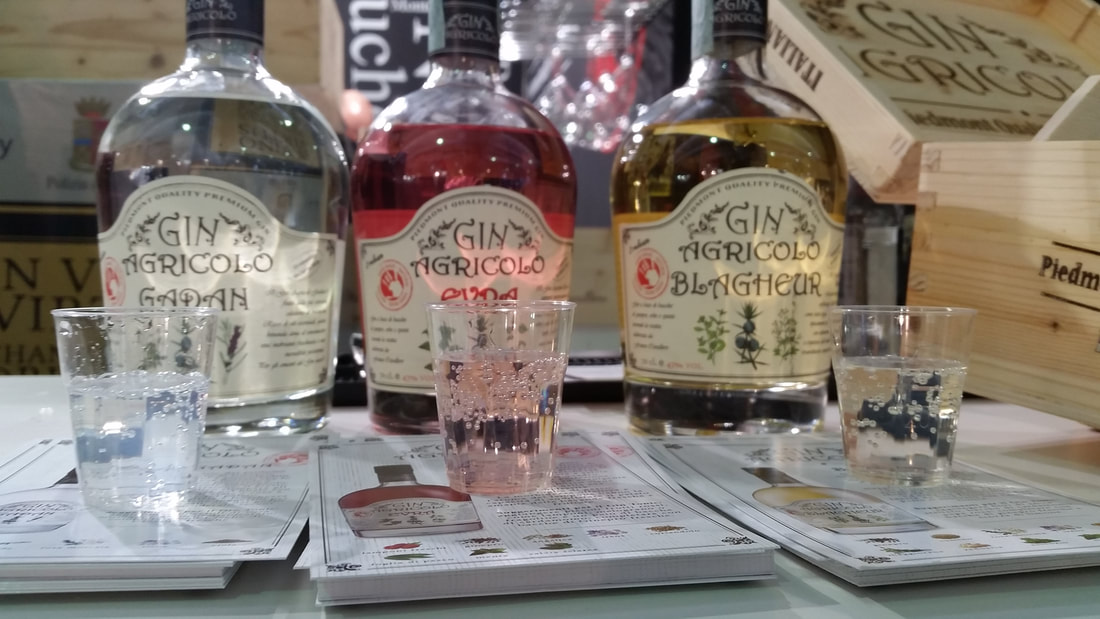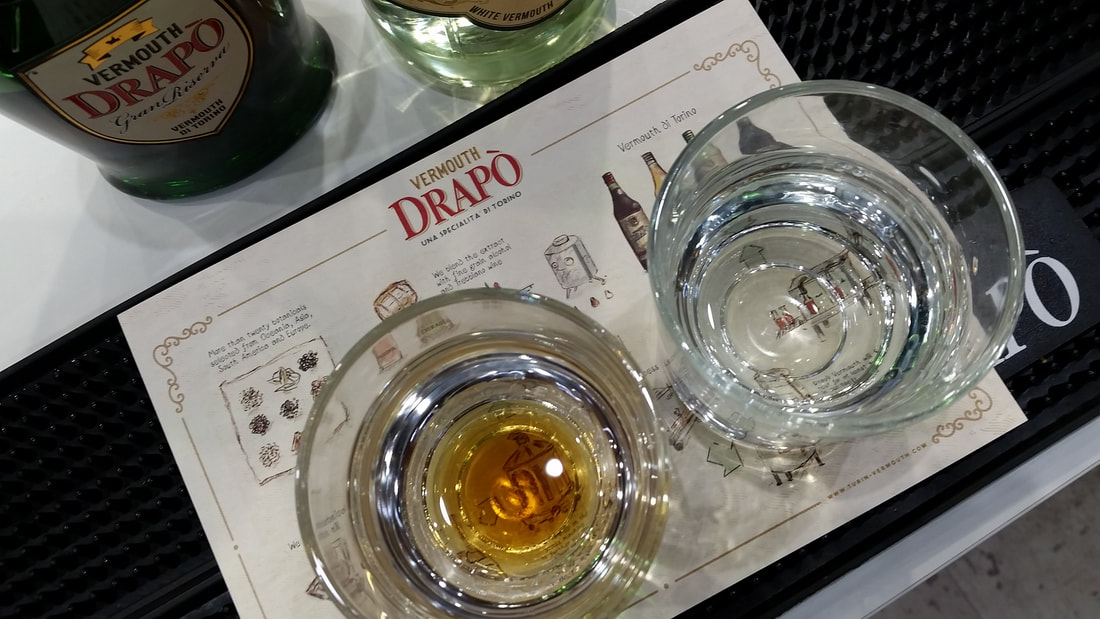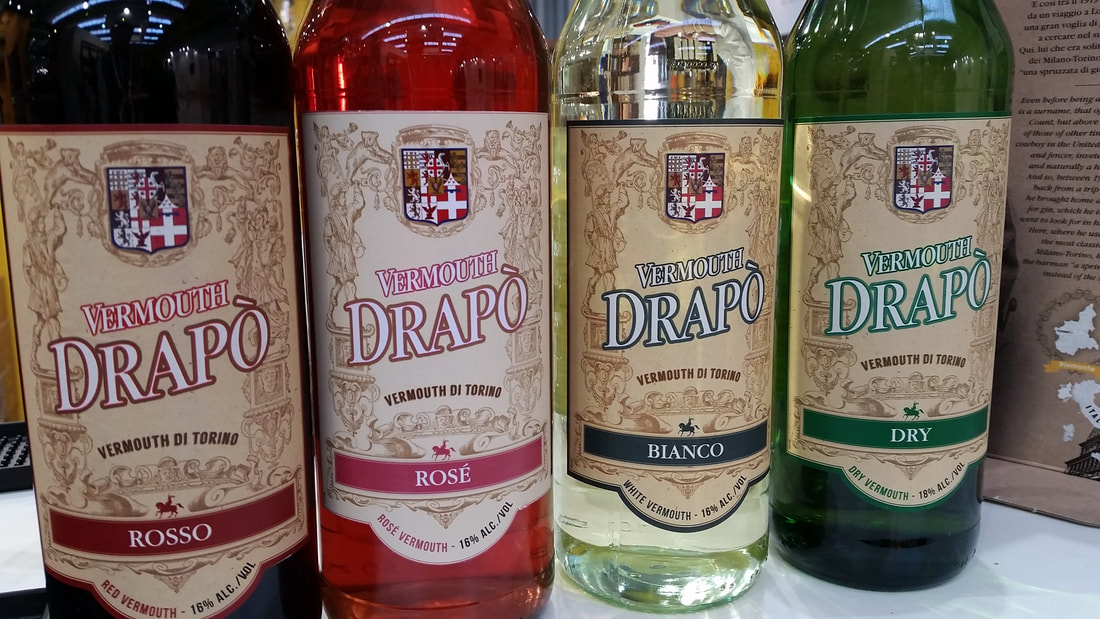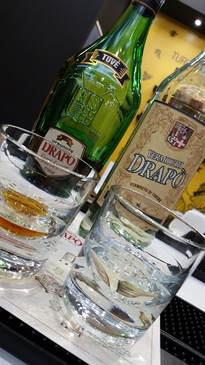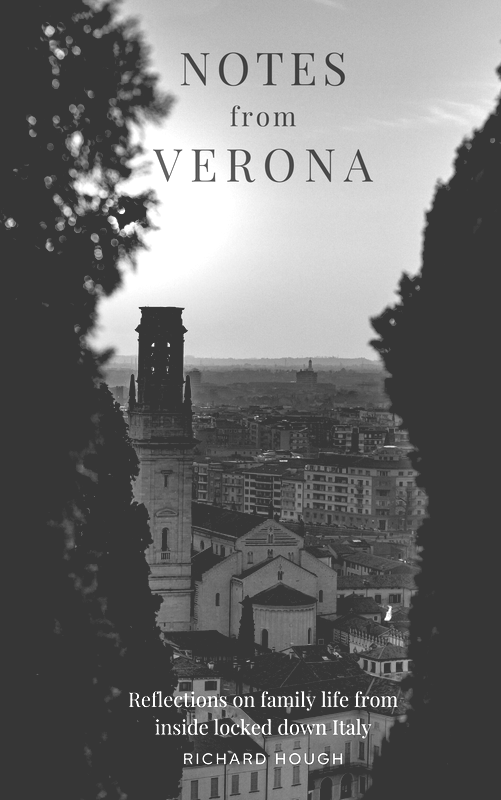|
It goes without saying that Vinitaly is a wine fair.
Over 15,000 wines promoted by 4,380 exhibitors from 36 different countries to 128,000 attendees of 143 different nationalities. That's a lot of wine! And while I didn't get around to tasting them all, I did give it a pretty good bash! But, if four days guzzling wine is just too much for you, there are a few alternatives. So, on the final day of Vinitaly 2018, I decided to seek out some refreshing alternatives. Here's what I found. Vinitaly 2018 - alternatives to wine
Within minutes of arriving at the fair, I was fortunate enough to bump into a good friend of mine from the Veronese bagpiping community (a small but voluble fraternity). Pietro also happens to be overseeing events in the International Pavilion and he quickly set me up with a Japanese sake tasting - the ideal way to kickstart a hitherto mundane Wednesday morning!
Masumi sake
For this tasting, I was fortunate enough to be in the expert hands of of Katsuhiko Miyasaka and Dominique Grandemenge from the Masumi Brewing Company, who nimbly guided us through the intoxicating world of premium Japanese Sake.
Having learned that the Masumi Brewery was founded in 1662 in the heart of the Japanese Alps, a region famed for the purity of its water, we started off with the Yawaraka Type-1. Soft, clean and surprisingly fruity, without any acidity, at 12% this would make an interesting alternative to a lunchtime bottle of white wine. Our second Sake was the Karakuchi Gold, which at 15% was slightly stronger than the Yawaraka and not as obviously fruity. After a quick explanation of the production process, including the mystical world of rice polishing, we were on to the next drop, the Karakuchi Kiippon. Light bodied and dry, it is one of the key expressions of the Masumi brand. A brief discussion around some of the issues currently facing the sake industry (it is generally considered to be the unfashionable drink of an older generation and, while quality has really improved in recent years, in an ultra competitive market, consumption is currently falling), and we were on to the final expression, the Nanago, from Masumi's super premium range. As with whisky, yeast is a crucial ingredient in Sake fermentation and this expression is named 'Seventh Heaven' in honour of yeast strain number seven, which was developed by the Masumi Brewery in 1946 and of which the brewery is particularly proud. Its mellow fragrance and strength in fermentation make it the most commonly used yeast in Japan. I have to say, the sake was not at all what I was expecting. Chilled, smooth and fragrant, I was completely blown away by it. I had been expecting some barely palatable fire water, but was surprised to learn that sake is generally fermented with a typical alcohol content of between 12% and 16% abv. Not only that, but it is best enjoyed like a bottle of wine (i.e. in one sitting and with a meal). Now my only problem is trying to find a supplier in Verona! Gin Agricolo
With lunchtime rapidly approaching, it was time for a light aperitivo.
What better than a quality Italian gin made using only the finest local ingredients? Franco Cavallero is a distinguished looking moustachioed entrepreneur from Asti, a small town about 55km east of Turin, famous for its sweet, sparkling wine (spumante). The Piedmontese also have a strong tradition of producing fashionable, aromatic aperitifs, such as Vermouth. Cavallero's bar, "Il Cicchetto", has been selecting and serving gin to his customers from all over the world. A few years ago he decided to start producing his own. The result is Gin Agricolo, a farmhouse style gin, produced using only locally sourced natural ingredients. From the mountains of Piedmont, juniper, wormwood (used in vermouth and absinthe), wild raspberries and many other aromatic plants with fragrant essences grow naturally. Gin Agricolo is produced in small batches. In order to protect their delicate and deep perfumes, the botanicals are individually infused in the alcohol base. The range includes 3 different expressions, the Gadan, a fresh clear gin with a pleasantly dry bitter taste, the Blagheur, a herbaceous gin with spicy notes of cumin, coriander and mint, and the Evra, a fruity pink gin with notes of wild berries, mint and orange peel. All are great to sip neat, but even better with ice and tonic! Vermouth Drapò
Finally stop on the tour was Vermouth, the quintessential Italian aperitif.
Essentially a heavily aromatised fortified wine, Vermouth was traditionally used for medicinal purposes, before being embraced as the ideal aperitif. Vermouth is also a common cocktail ingredient, particularly in Martinis, Manhattans and, of course, the Negroni (one part gin, one part vermouth rosso, and one part Campari, garnished with orange peel). Vermouth's utility lies in its capacity to lower the alcohol content of cocktails with strong spirits as their base, whilst also providing a pleasant herbal-aromatic flavour.
Drawing on the city's proud tradition of liquor production, Turin Vermouth was established in 2011, the branding perhaps reflecting a nostalgic glimpse back to the golden era of the aperitif. In local dialect, Drapò is the name given to the flag of Piedmont, appropriate for a drink that is itself symbolic of the region.
Selecting more than 20 botanicals from across Oceania, Asia, South America and Europe, herbs including cinchona, angelica, star anise, juniper, lemon balm, sage, and chamomile, and carefully infusing them with fine grain alcohol and Trebbiano wine, the resulting blend is then filtered and left to rest for five weeks before being bottled. The sweet Gran Riserva, produced in limited quantities and matured in a single French oak barrique for at least 8 months, was a fitting way to bring to a close a fascinating morning spent exploring some wonderful alternatives to wine. Now it's time for a beer! |
AboutRichard Hough writes about history, football, wine, whisky, culture + travel and is currently working on a trilogy about wartime Verona.
|
